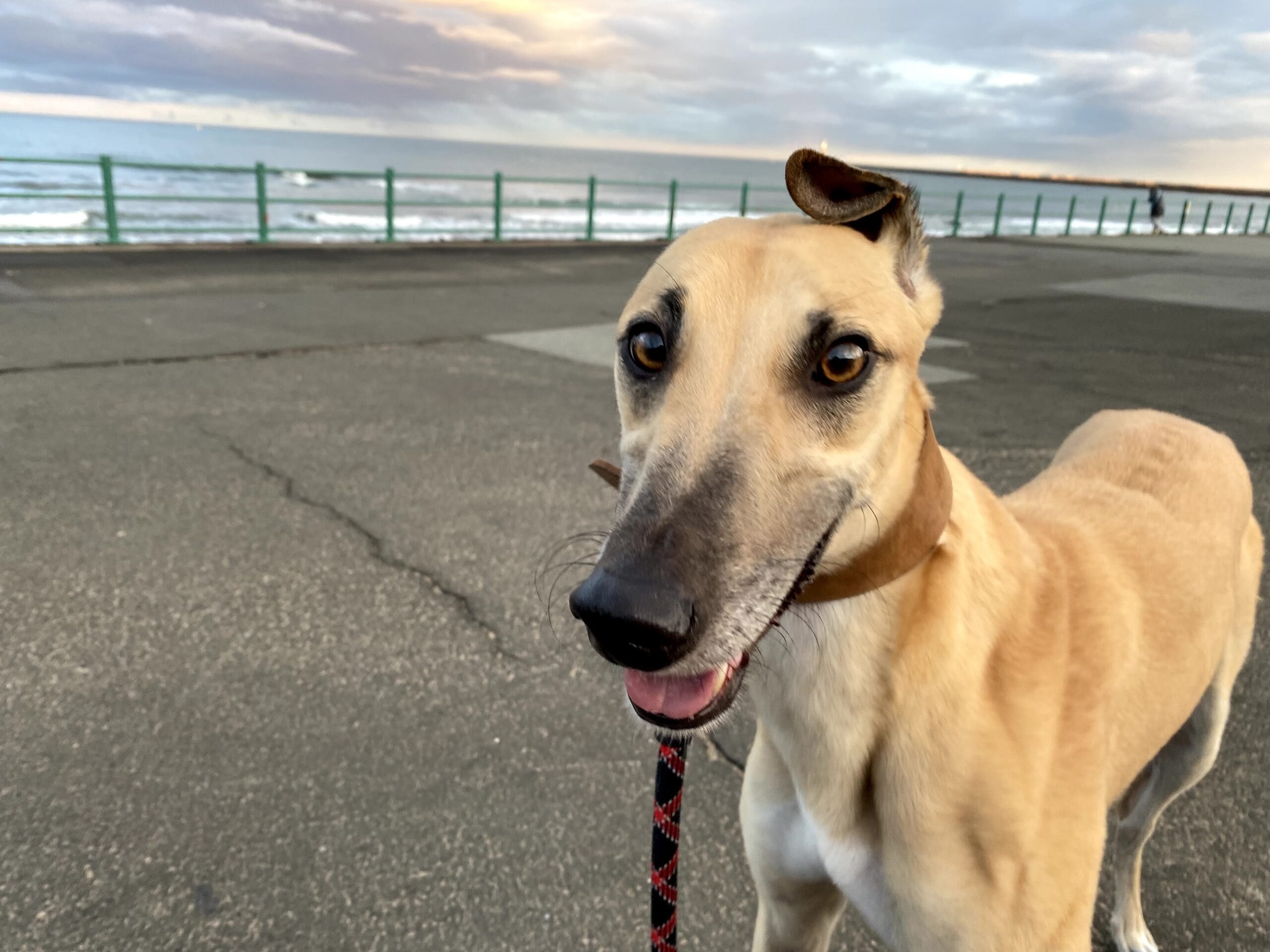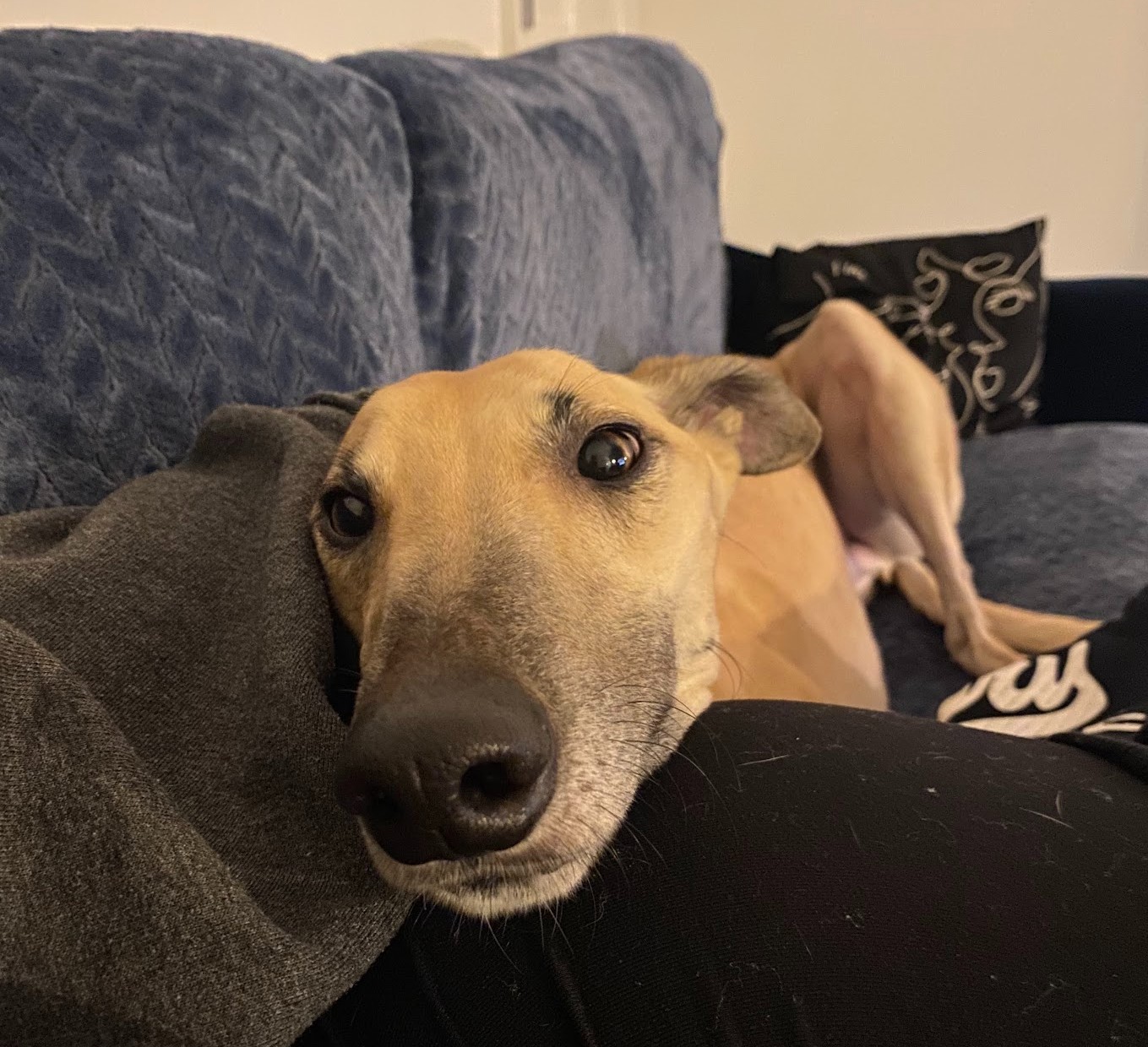
Since March 2020, there has been a boom in pet ownership with households rushing to buy what was dubbed a ‘pandemic puppy’. However, puppies aren’t the only option for dog ownership – in this blog, Health Science Content Writer Rebecca Dargue describes her experience adopting a retired Greyhound, and why she believes more people should consider an adult dog when thinking about getting a new pet.
Pet ownership in the pandemic
With the widespread introduction of remote/ hybrid working in 2020, more families than ever found that being at home more made their lives more suitable for pet ownership. As recently reported, despite more and more people – at least partially – returning to the office, this trend appears to be holding nearly two years later.1
However, there were initially worries as to whether some families may have bought or adopted their pets without the proper research and that rescue centres would see an influx of dogs when lockdown measures eased.2 Another concern is that many pandemic puppies appear to have developed behavioural issues, often through the lack of proper socialisation or separation training during their formative months.3
At IGNIFI, we support responsible pet ownership, and for many owners a puppy is a great addition to the family (some of our own team have even recently welcomed a new puppy into their home). However, there are some great alternatives if a puppy isn’t right for you.
My experience – choosing the right fit
I am also one of the many people who, since the start of the pandemic, have welcomed a dog into their home for the first time. For a long while, my partner and I had known that we wanted a dog and in early 2021, we decided to do some more research to find out whether there was a breed of dog that could fit in well with our lifestyle.
Quite early on, we realised that a puppy wasn’t going to be right for us, particularly as first-time pet owners. We live in a flat, so we were looking for a dog that would be happy in a relatively small space and that could be left alone for short periods of time. We also wanted a dog that enjoyed getting out on walks but wasn’t going to need excessive amounts of exercise.
We soon discovered that Greyhounds perfectly fit with all we were asking for: they’re actually really lazy dogs, sleeping for around 18-hours of the day, and are perfectly content to spend their day sprawled out on the sofa, providing they get around 40 minutes of exercise.
They are also surprisingly affordable. While the average cost of a new puppy reached £1,875 in 2021,4 Greyhounds that have been retired from racing are often rehomed via dedicated charities, who only ask for a small rehoming fee along with any donations you would like to give. These charities are often full of recently retired dogs looking for a home, giving you a lot of choice when it comes to finding the right pet.
The majority of Greyhounds are retired between 3 and 5 years old, meaning they are still young dogs and are generally a healthy breed, not being predisposed to as many health conditions as some others. Their laid-back affectionate temperament also makes them a great choice for parents looking to expand their family with a child-friendly dog.

The adoption process
Once we had decided that a Greyhound was definitely for us, we got in touch with a local Greyhound rehoming charity, Durham District Retired Greyhounds (DDRG). At this stage, they asked us about our lifestyle and what we were looking for in a dog. This meant that on our first visit, they could introduce us to a few of their dogs that they thought would be a good fit.
On our first visit, we met three dogs that they thought would be suitable for first-time owners. Arthur (at the time called Cruze) was actually the first dog that we met, and we knew straight away that he was the right dog for us. The adoption process was thorough but quite simple, providing we passed a home inspection (this was done virtually due to the restrictions at the time). Arthur was reserved for us that day, and we were able to choose a day to take him home. We were conscious that we wanted to make sure we were ready and certain of our choice before accepting a dog into our home, so decided to wait around 3–4 weeks before returning to collect Arthur, to give us time to prepare.
During this time, we visited the centre again to walk Arthur and get to know him more, kitted out our flat with the necessary supplies and researched tips and tricks for helping him to settle in. Along with the countless YouTube videos and the book ‘Retired Racing Greyhounds for Dummies’, we found the Battersea Dogs & Cats Home website to have a great selection of resources for first-time dog owners.
Even after all of this research, there were still a lot of decisions to be made about how we were going to look after him. Would he be crate trained? What would his exercise routine be? How were we going to teach him to climb the stairs for the first time? Luckily, the rehoming charity were fantastic, talking through life with a Greyhound with us, along with answering all of our (many) questions. We were also told that they are always there to help with any questions or advice that we might need throughout Arthur’s life, which was great for peace of mind.
What have I learned from the experience?
We’ve now had Arthur for around 6-months and couldn’t be happier with our decision. He had a short racing career and only just turned 3 in November. We’re finding he’s far better suited to life as a pet and he loves nothing more than cuddling up on the sofa while we watch TV. We definitely struck gold with Arthur: he came to us largely house trained, he’s great with both humans and other dogs and he hasn’t shown any signs of separation anxiety, even though he spends a bit more time on his own now that I am hybrid working.
Overall, he has settled in so well, and is the perfect addition to our family – but I never would have thought to look at ex-racing Greyhounds had we not done our research.
I also think that one of the main reasons Arthur is such a good fit is down to the workers at the DDRG, who were able to get to know his personality, quirks and temperament (and the personalities of all of the other dogs they take on) during his time with them, helping them to match him to the right home. This is a benefit of adopting an adult dog, as puppies are still developing, making it harder to predict what they will be like as they grow up.
During this process I was given some great advice which I definitely stand by: you should choose a dog breed that fits in well with your existing lifestyle and routine rather than trying to force your life to fit around the dog and falling short.
My advice to people considering a pet is that whatever you decide, make sure that you have done your research and that this is definitely the right decision for you. Also, why not widen your search? Adult dogs, while often overlooked, could be a great option for you and your family.

To keep up to date with the latest news from the IGNIFI team and to read our next blog as soon as it is published, remember to follow us on LinkedIn along with our social channels.








